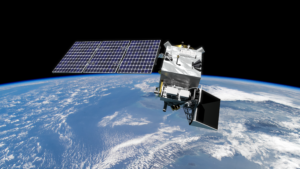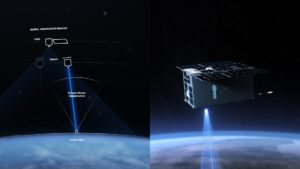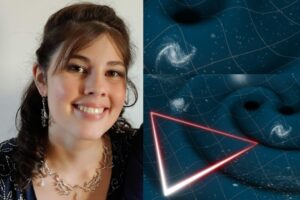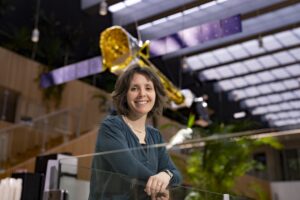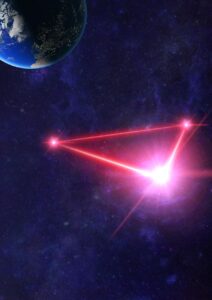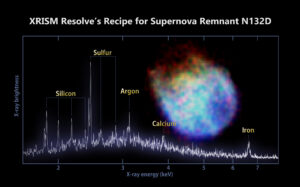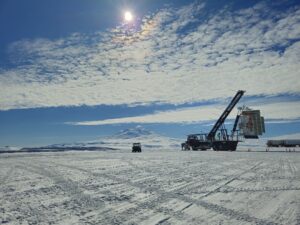SRON-wetenschappers Otto Hasekamp en Bastiaan van Diedenhoven hebben beiden een NWO-GO subsidie ontvangen voor onderzoek naar aerosolen in de aardatmosfeer. Ze gebruiken data van NASA’s PACE-klimaatsatelliet, die op 8 februari is gelanceerd met aan boord het Nederlandse aerosol-meetinstrument SPEXone.
Category: News items
ESA kiest Nederlands satellietsysteem voor lokale emissiemonitoring
De Europese ruimtevaartorganisatie (ESA) heeft groen licht gegeven voor de realisatie van de Nederlandse TANGO-satellieten. TANGO meet op bronniveau de broeikasgasuitstoot van o.a. energiecentrales, kolencentrales, vuilnisbelten en fabrieken. De Nederlandse voorganger TROPOMI speurt al sinds 2017 wereldwijd het broeikasgas methaan op en kan zo’n 5% van de uitstootbronnen in beeld brengen. Met de opvolger TANGO wordt dat zo’n 75%. Bovendien gaat TANGO emissies meten van CO2, het gas dat wereldwijd goed is voor de grootste broeikasgas uitstoot. De satellieten worden ontwikkeld door de Nederlandse partijen ISISPACE, TNO, SRON en het KNMI. TANGO kan naar verwachting vanaf begin 2027 gelanceerd worden.
Gabby Aitink-Kroes: ‘An inquisitive attitude is more important’
Gabby Aitink-Kroes has 25 years of experience in building and realizing instrumentation for large professional observatories on earth (The Very large Telescope) and in space (James Webb Space Telescope). For LISA, she is the mechanical lead engineer for the housing of the Quadrant Phase Receiver (QPR). A little unit where mechanical, electrical, optical, and thermal engineering meet in a small but very important package.
NASA lanceert klimaatsatelliet met Nederlandse fijnstofmeter
(English follows Dutch) NASA’s klimaatsatelliet PACE is in de vroege ochtend van 8 februari succesvol gelanceerd vanaf Cape Canaveral. PACE gaat metingen doen aan aerosolen, plankton en oceaankleur. Aerosolen zijn de grote onbekende in klimaatmodellen. Het Nederlandse instrument SPEXone gaat daar verandering in brengen via metingen aan aerosolen in de atmosfeer. SPEXone is gebouwd door …
First Light: eerste foto’s XRISM vrijgegeven
With the release of its first two images, JAXA’s X-ray telescope XRISM has officially reached the milestone of First Light. The images show the galaxy cluster Abell 2319 and supernova remnant N132D, demonstrating XRISM’s large field-of-view and high spectral resolution. SRON has developed the filter wheel and an X-ray source used to calibrate the energy scale of the Resolve instrument.
Ballontelescoop GUSTO opgelaten vanaf Antarctica
NASA’s GUSTO balloon telescope has launched from Antarctica on December 31st. The far-infrared observatory carries out the first large-scale survey with velocity-resolved imaging of the spectral lines emitted by three cosmic elements between stars. GUSTO is equipped with three 8-pixel cameras. SRON and TU Delft made one of those and contributed to the other two.

